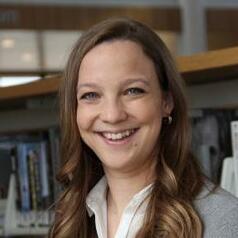
Scientists are turning data into sound to listen to the whispers of the universe (and more)
Astronomers use a wide range of analysis tools beyond images to understand nature at a deeper level.

This article was originally published at The Conversation. The publication contributed the article to Space.com's Expert Voices: Op-Ed & Insights.
Jeffrey Cooke, Professor, Centre for Astrophysics and Supercomputing, Swinburne University of Technology
We often think of astronomy as a visual science with beautiful images of the universe. However, astronomers use a wide range of analysis tools beyond images to understand nature at a deeper level.
Data sonification is the process of converting data into sound. It has powerful applications in research, education and outreach, and also enables blind and visually impaired communities to understand plots, images and other data.
Its use as a tool in science is still in its early stages — but astronomy groups are leading the way.
In a paper published in Nature Astronomy, my colleagues and I discuss the current state of data sonification in astronomy and other fields, provide an overview of 100 sound-based projects and explore its future directions.
The cocktail party effect
Imagine this scene: you're at a crowded party that's quite noisy. You don't know anyone and they're all speaking a language you can't understand — not good. Then you hear bits of a conversation in a far corner in your language. You focus on it and head over to introduce yourself.
Get the Space.com Newsletter
Breaking space news, the latest updates on rocket launches, skywatching events and more!
While you may have never experienced such a party, the thought of hearing a recognizable voice or language in a noisy room is familiar. The ability of the human ear and brain to filter out undesired sounds and retrieve desired sounds is called the "cocktail party effect."
Similarly, science is always pushing the boundaries of what can be detected, which often requires extracting very faint signals from noisy data. In astronomy we often push to find the faintest, farthest or most fleeting of signals. Data sonification helps us to push these boundaries further.
The video below provides examples of how sonification can help researchers discern faint signals in data. It features the sonification of nine bursts from a repeating fast radio burst called FRB121102.
Fast radio bursts are millisecond bursts of radio emission that can be detected halfway across the universe. We don't yet know what causes them. Detecting them in other wavelengths is the key to understanding their nature.
Too much of a good thing
When we explore the universe with telescopes, we find it's full of cataclysmic explosions including the supernova deaths of stars, mergers of black holes and neutron stars that create gravitational waves, and fast radio bursts.
Here you can listen to the merger of two black holes.
And the merger of two neutron stars.
These events allow us to understand extreme physics at the highest-known energies and densities. They help us to measure the expansion rate of the universe and how much matter it contains, and to determine where and how the elements were created, among other things.
Upcoming facilities such as the Rubin Observatory and the Square Kilometre Array will detect tens of millions of these events each night. We employ computers and artificial intelligence to deal with these massive numbers of detections.
However, the majority of these events are faint bursts, and computers are only so good at finding them. A computer can pick out a faint burst if it's given a template of the "desired" signal. But if signals depart from this expected behavior, they become lost.
And it's often these very events that are the most interesting and yield the biggest insight into the nature of the universe. Using data sonification to verify these signals and identify outliers can be powerful.
More than meets the eye
Data sonification is useful for interpreting science because humans interpret audio information faster than visual information. Also, the ear can discern more pitch levels than the eye can discern levels of color (and over a wider range).
Another direction we're exploring for data sonification is multi-dimensional data analysis — which involves understanding the relationships between many different features or properties in sound.
Plotting data in 10 or more dimensions simultaneously is too complex, and interpreting it is too confusing. However, the same data can be comprehended much more easily through sonification.
As it turns out, the human ear can tell the difference between the sound of a trumpet and flute immediately, even if they play the same note (frequency) at the same loudness and duration.
Why? Because each sound includes higher-order harmonics that help determine the sound quality, or timbre. The different strengths of the higher-order harmonics enable the listener to quickly identify the instrument.
Now imagine placing information — different properties of data — as different strengths of higher-order harmonics. Each object studied would have a unique tone, or belong to a class of tones, depending on its overall properties.
With a bit of training, a person could almost instantly hear and recognize all of the object’s properties, or its classification, from a single tone.
Beyond research
Sonification also has great uses in education (Sonokids) and outreach (for example, SYSTEM Sounds and STRAUSS), and has widespread applications in areas including medicine, finance and more.
But perhaps its greatest power is to enable blind and visually impaired communities to understand images and plots to help with everyday life.

It can also enable meaningful scientific research, and do so quantitatively, as sonification research tools provide numerical values on command.
This capability can help promote STEM careers among blind and visually impaired people. And in doing so, we can tap into a massive pool of brilliant scientists and critical thinkers who may otherwise not have envisioned a path towards science.
What we need now is government and industry support in developing sonification tools further, to improve access and usability, and to help establish sonification standards.
With the growing number of tools available, and the growing need in research and the community, the future of data sonification sounds bright!
This article is republished from The Conversation under a Creative Commons license. Read the original article.
Follow all of the Expert Voices issues and debates — and become part of the discussion — on Facebook and Twitter. The views expressed are those of the author and do not necessarily reflect the views of the publisher.
Join our Space Forums to keep talking space on the latest missions, night sky and more! And if you have a news tip, correction or comment, let us know at: community@space.com.

I am interested in the formation and evolution of galaxies over cosmic time via external and internal processes. I am currently leading research in three main areas: supernovae, galaxy surveys, and absorption-line systems.
Supernovae have a direct influence on the formation and evolution of galaxies by such means as arresting and inducing star formation, chemically enriching galaxies, and contributing to the ionization and expulsion of gas. I pioneered a technique to detect supernovae in high redshift galaxies and at distances far greater than has been previously achieved. I am using these supernovae to measure the form of the stellar initial mass function and to constrain galaxy processes. This research has also discovered a class of ultra-luminous supernovae that may be observational examples of the pair-instability process. Our most distant discoveries occurred when the universe was only about 10% its current age. Because the first generation of stars (Population III stars) are believed to result in pair-instability supernovae, we may be detecting the deaths of the very first stars!
The dark matter mass and merger histories of galaxies are powerful means to track the formation and evolution of galaxies. I conduct large, deep imaging and spectroscopic surveys at high- and intermediate-redshift and analyze high-resolution cosmological simulations to investigate the spatial distributions and mass of galaxy populations. This work has uncovered a surprising relationship between both the spectral features and kinematics of galaxies and their large-scale environment. These surveys have also revealed the effects of mergers and interactions, for example, the relationship between emission feature strength and galaxy separation.
Absorption-line systems provide the necessary gas to fuel initial and ongoing star formation in galaxies. However, discerning sightlines through coalescing proto-galaxy populations from sightlines through inflowing gas from the IGM or galaxy halo outflows is far from straightforward. I am involved in several projects aimed to characterize absorption systems illuminated by a background quasar or galaxy. Understanding gas consumption and expulsion and identifying fundamental absorber properties and their host galaxies is essential for a complete picture of galaxy formation and evolution.









